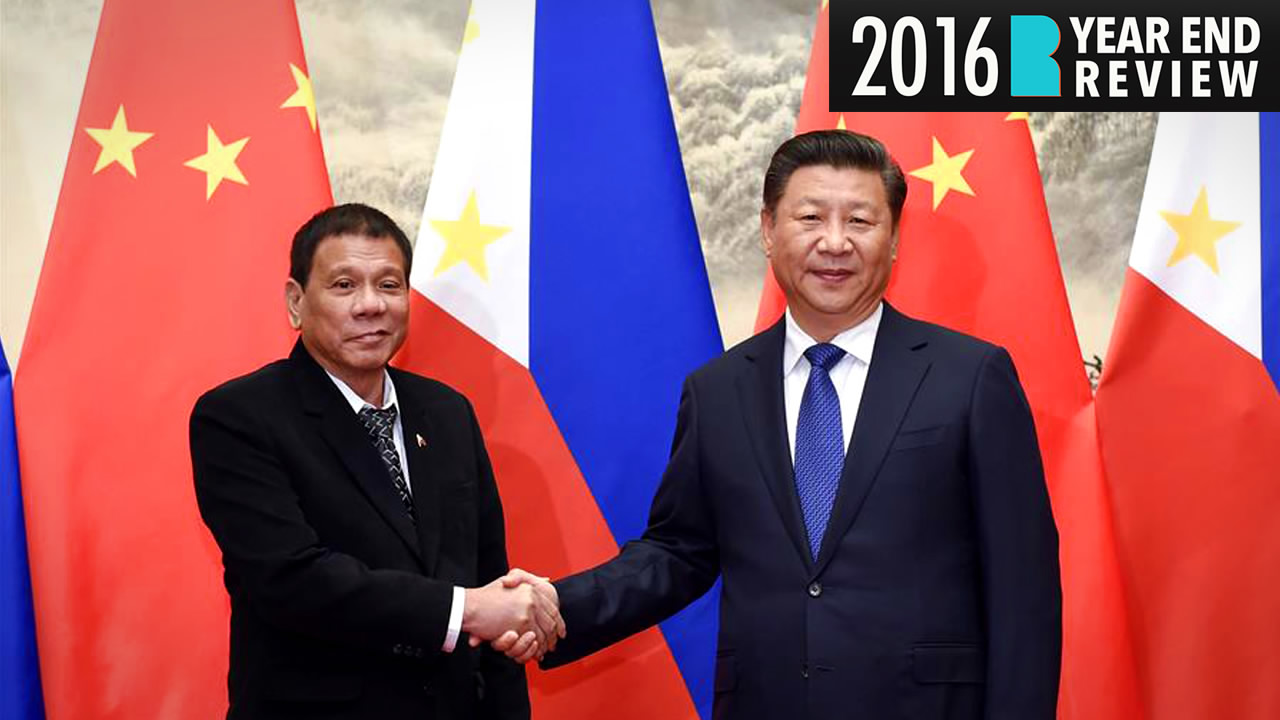-The arbitration ruling of the South China Sea disputes dominated global headlines earlier this year
-President Rodrigo Duterte’s election and efforts to cool down the issue brought Beijing and Manila closer
-China’s stance of resolving its territorial disputes through dialogue with the Philippines ultimately prevailed
The China-Philippines relationship endured a turbulent 2016, almost reaching breaking point in July before a state visit to China by new Philippine President Rodrigo Duterte signaled a rapprochement.
Ties between the two countries had been strained over many years, and came to a head dramatically in 2013 when then Philippine President Benigno Aquino III took China to an ad-hoc tribunal court challenging Beijing’s sovereign claims over the islands and reefs in the South China Sea. The ruling was finally released in July 2016 – and it came out in favor of the Philippines. But China dismissed it as a “political farce” and reiterated its determination to settle territorial disputes through negotiations and dialogue with the parties directly concerned.

An aerial photo of Hainan Maritime Safety Administration taken on September 25, 2015 from a seaplane shows cruise vessel Haixun 1103 heading to the Yacheng 13-1 drilling rig during a patrol in South China Sea. /Xinhua Photo
An aerial photo of Hainan Maritime Safety Administration taken on September 25, 2015 from a seaplane shows cruise vessel Haixun 1103 heading to the Yacheng 13-1 drilling rig during a patrol in South China Sea. /Xinhua Photo
China-Philippines relations were fractured, and rebuilding ties looked a tough task. But soon after winning the Philippine presidential election on May 9, Duterte looked to cool down tensions with China.
HOW DUTERTE EASED TENSIONS
On May 17, he held talks with Zhao Jianhua, China’s ambassador to the Philippines. Duterte confirmed that his government was open to direct talks over the territorial disputes in the South China Sea.
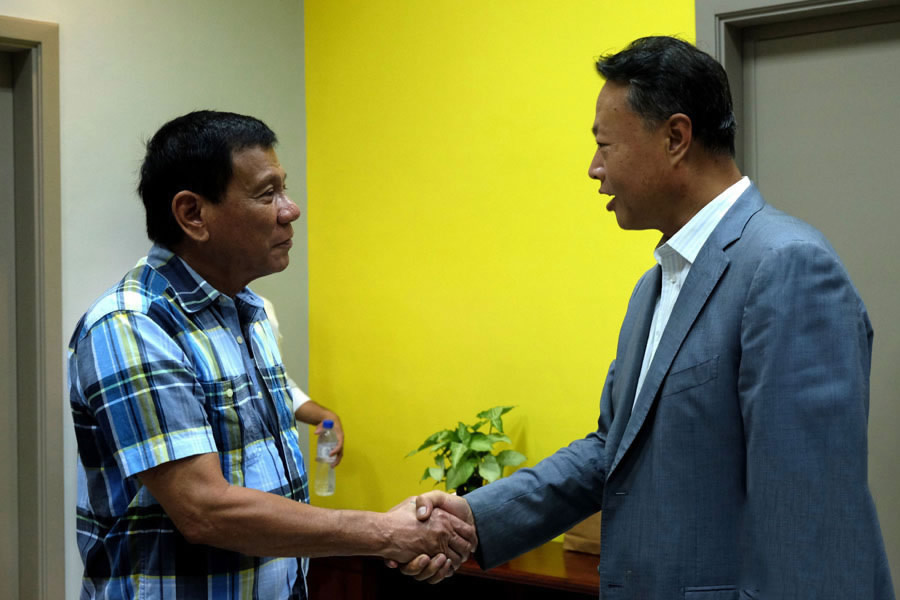
Philippine President-elect Rodrigo Duterte (L) shakes hands with the Chinese ambassador to the Philippines Zhao Jianhua during a meeting in Davao City, on the southern island of Mindanao, the Philippines, May 16, 2016. /Xinhua Photo
Philippine President-elect Rodrigo Duterte (L) shakes hands with the Chinese ambassador to the Philippines Zhao Jianhua during a meeting in Davao City, on the southern island of Mindanao, the Philippines, May 16, 2016. /Xinhua Photo
In continued efforts to promote peace and cooperation, Duterte sent former President Fidel Ramos to meet Chinese officials in Hong Kong on August 9, with the aim of rekindling the Sino-Philippine friendship and paving the way for further talks between the two sides.
Realizing the necessity to place bilateral ties on a productive track, Duterte told Xinhua News Agency on October 13 that “it’s only China (that) can help us.” The Philippine leader admitted his country needed to reestablish a friendly relationship with China and learn from the latter's success in economic policy and trade, especially given the turbulent global economic conditions.
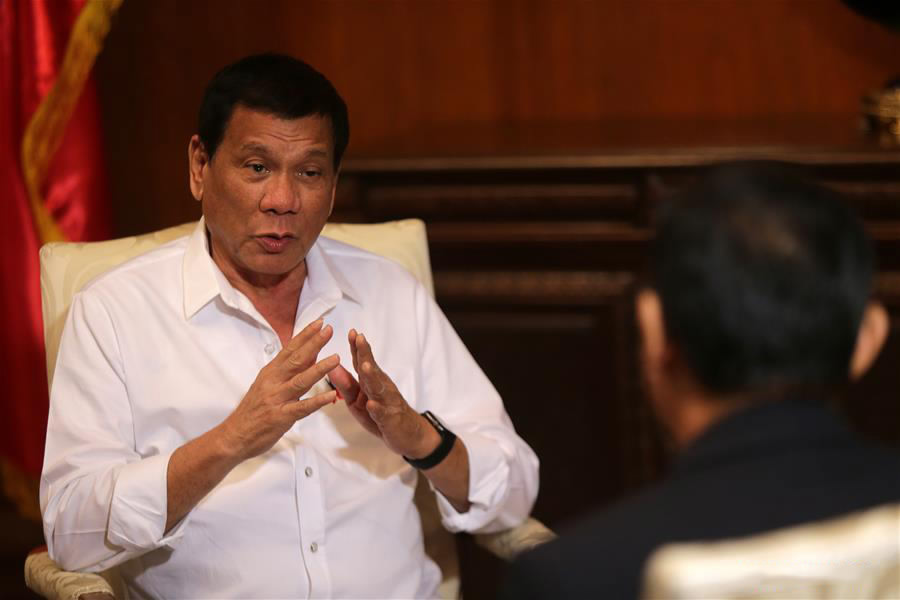
Duterte speaks during an interview with Xinhua News Agency in Manila, the Philippines, October 13, 2016. /Xinhua Photo
Duterte speaks during an interview with Xinhua News Agency in Manila, the Philippines, October 13, 2016. /Xinhua Photo
A MILESTONE VISIT, A TURNAROUND FOR TIES
Several days later, a “milestone visit” surprised many around the world. Duterte paid an ice-breaking trip to China to thaw bilateral ties on October 18. During his four-day state visit, China and the Philippines agreed that disputes in the South China Sea were not the sum total of relations, and that the two countries would enhance cooperation in trade, infrastructure and drug control.
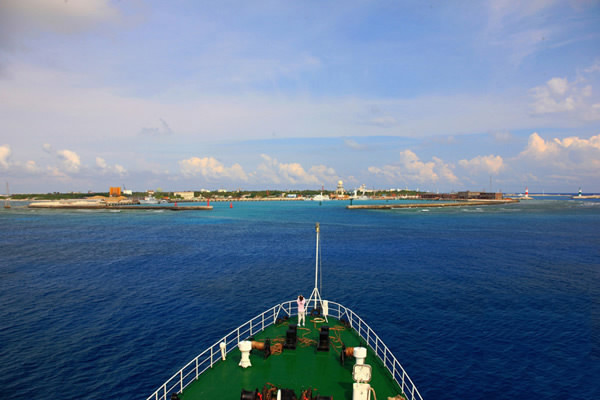
Patrol vessel Haixun-21 arrives in Yongxing Island of Sansha City in the South China Sea, April 22, 2015. /Xinhua Photo
Patrol vessel Haixun-21 arrives in Yongxing Island of Sansha City in the South China Sea, April 22, 2015. /Xinhua Photo
During Duterte’s visit, memorandums of understanding worth 24 billion US dollars in total were signed. Thirteen agreements were inked between the countries, covering a wide range of areas including trade, tourism, agriculture, security, healthcare and infrastructure.
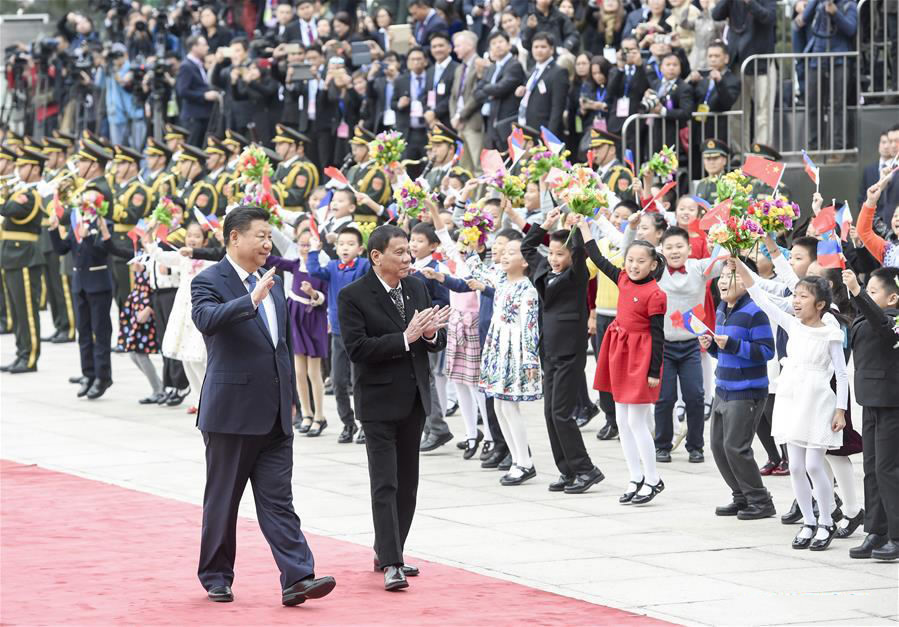
Chinese President Xi Jinping holds a welcome ceremony for visiting Philippine President Rodrigo Duterte before their talks in Beijing, October 20, 2016. /Xinhua Photo
Chinese President Xi Jinping holds a welcome ceremony for visiting Philippine President Rodrigo Duterte before their talks in Beijing, October 20, 2016. /Xinhua Photo
The Philippines no longer sees China as a “national security threat” but as an “economic partner” in the development of the country, explained the new Philippine ambassador to China Santiago “Chito” Santa Romana on November 1.
And the benefits of improved China-Philippines relations are expected to spread beyond the two countries directly involved. The rapprochement is a positive for all peace-loving and development-pursuing nations in the region.
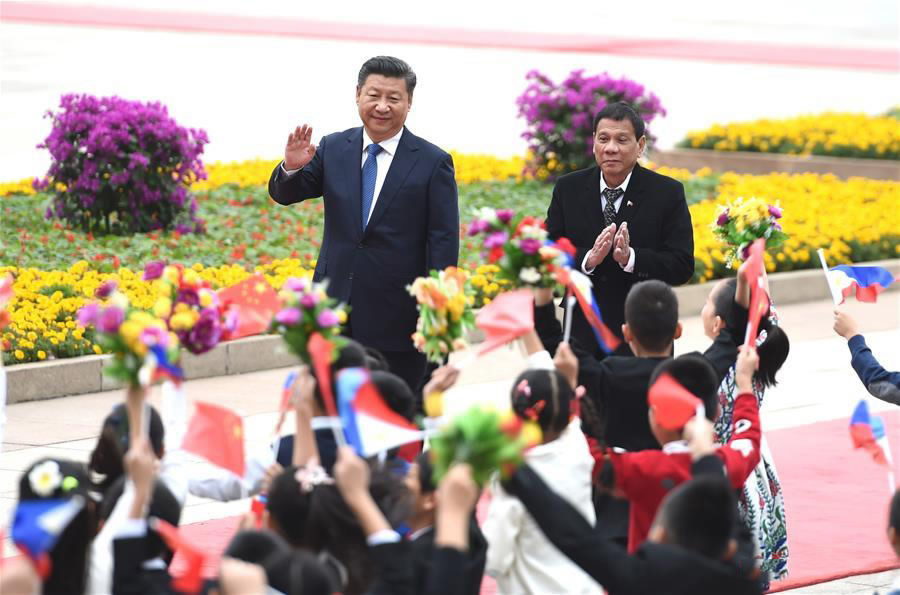
Chinese President Xi Jinping holds a welcome ceremony for visiting Philippine President Rodrigo Duterte before their talks in Beijing, October 20, 2016. /Xinhua Photo
Chinese President Xi Jinping holds a welcome ceremony for visiting Philippine President Rodrigo Duterte before their talks in Beijing, October 20, 2016. /Xinhua Photo
Not all the sources of dispute between China and the Philippines have been solved, but the reconciliation sparked by Duterte’s fresh approach implies optimism and hope for the future.
Questions for 2017
-Will Beijing and Manila build on what could be a promising new era of positive ties together? Will the next year see the Philippines move even further away from its former ally the US?
-How will Donald Trump handle the South China Sea issue? Will there be a greater US presence in the region, or will his military policy change compared to that of Obama?
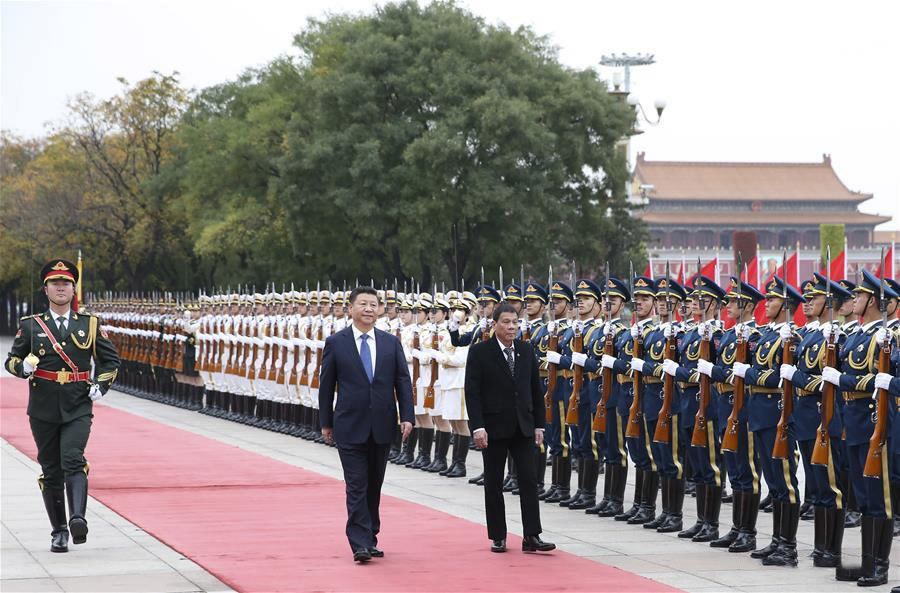
Chinese President Xi Jinping holds a welcome ceremony for visiting Philippine President Rodrigo Duterte before their talks in Beijing, October 20, 2016. /Xinhua Photo
Chinese President Xi Jinping holds a welcome ceremony for visiting Philippine President Rodrigo Duterte before their talks in Beijing, October 20, 2016. /Xinhua Photo
-Will Trump’s comments on Taiwan and the One-China principle have an effect on regional security?
-Will other countries in the region pursue similar so-called court cases to resolve territorial disputes? Or will they be inspired to conduct talks with China? Can multilateral talks such as ASEAN and APEC play a bigger role in easing regional tensions?
(Written by Meng Yaping; Edited by John Goodrich and Nick Moore; Video edited by Mi Xue; and Room with a View produced by Zhang Dayu)

